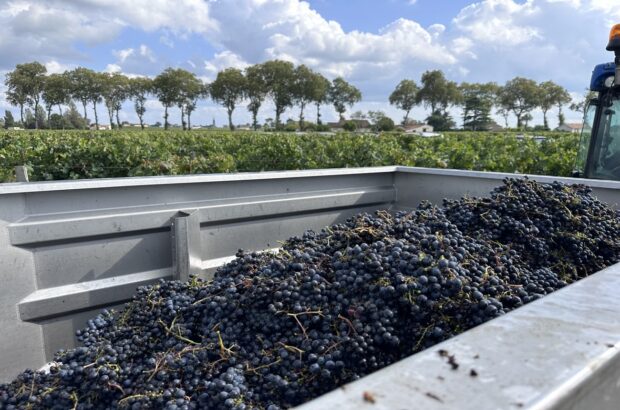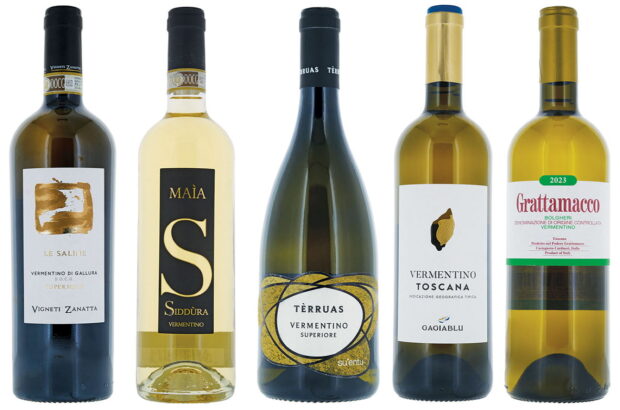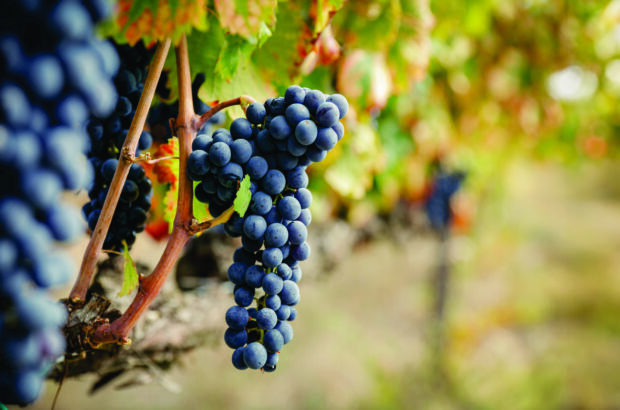Happy Canyon of Santa Barbara is the place most Bordeaux varietals planted in Santa Barbara County call home. Its name is said to have originated during Prohibition, where one could “sneak off to Happy Canyon” and procure a then-illicit local spirit. It was the fourth region in Santa Barbara County to attain AVA status, and did so in 2009. There are just over 400 acres of grapes planted across less than a dozen vineyards, and almost all of them can be viewed from one point in its southwestern section, Armour Ranch Road near Happy Canyon Road.
Located on the eastern-most side of the Santa Ynez Valley, Happy Canyon is the warmest subregion of Santa Barbara County. Daytime temperatures exceeding 90 degrees are not uncommon, but are cushioned by the same marine influence felt throughout the Santa Ynez Valley. Raising horses has long been a way of life here, giving the region a pastoral and spread out topography, with rolling hills in the southwest corner leading into higher elevations in the northeast portion. The soils throughout are a mixture of sand, gravel and clay, with the additional unique presence of California’s state rock, the shiny, soapy-textured serpentinite. This rare, dark green, magnesium-rich metamorphic rock ‘is the rule rather than the exception in Happy Canyon’, says Brandon Sparks-Gillis, Winemaker at Dragonette Cellars.
At this early stage in Happy Canyon’s development, Sauvignon Blanc is having the most success in expressing the individuality of the region. The wines are decadent and creamy, with lush, layered tropical fruit notes leading to a clean and floral finish. This textural swing combined with a uniquely pleasing, fresh-picked-herbs quality of the pyrazines often found on the nose give these wines a distinctive signature on the world stage. Grimm’s Bluff Vineyard is a biodynamically farmed site, and one that is the source for some of the most nuanced and multifaceted Sauvignon Blanc in the appellation.
Grassini Family Vineyard tends to produce balanced, energetic wines, while Vogelzang Vineyard shows off an opulent, oily texture. Cabernet Sauvignon blends from Happy Canyon are leathery and woodsy but maintain freshness, and the herbal quality of the pyrazines found in the Sauvignon Blancs is often displayed in these wines as well. The tannin structure tends to be soft and fine by the standards of other California Cabernet, making for more easily accessible wines in their youth. Syrah makes up a significant percentage of the grapes planted here as well, often yielding riper and less savory styles than those found in the Syrah-centric Ballard Canyon to the west.
Relative the more established western side of Santa Barbara County, the appellations on the east side of the the region feel like they are still finding their identity, Happy Canyon included.
Long-entrenched land ownership has made it difficult for outsiders to set up shop, and understandably doesn’t want to see the thoroughbred industry uprooted in favor of hill-to-hill vineyards. This is to be applauded, as there is great work being done with what has already been established, and impressive headway has been made in the mere decade that has passed since the region was given its official AVA. As with much of Santa Barbara wine country, Happy Canyon has a therapeutic ease about it; this healthy presence should be preserved in the interest of consistency, not rushed in favor of expansion.












